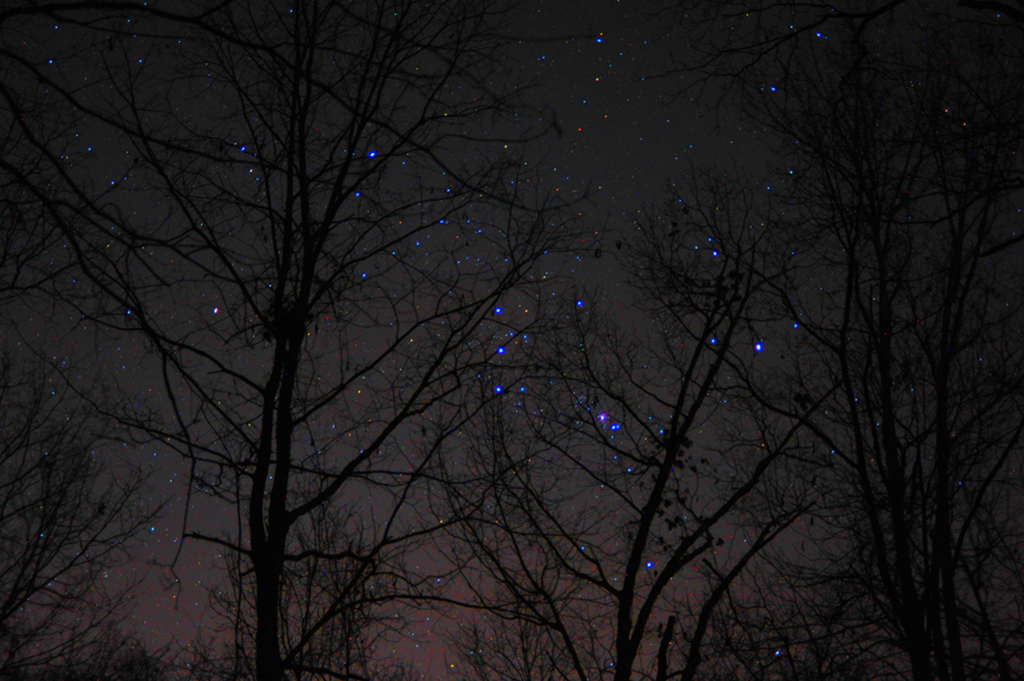2020 January 2
The Fainting of Betelgeuse
Image Credit & Copyright: Jimmy Westlake (Colorado Mountain College)
Explanation: Begirt with many a blazing star, Orion the Hunter is one of the most recognizable constellations. In this night skyscape the Hunter’s stars rise in the northern hemisphere’s winter sky on December 30, 2019, tangled in bare trees near Newnan, Georgia, USA. Red super giant star Betelgeuse stands out in yellowish hues at Orion’s shoulder left of center, but it no longer so strongly rivals the blue supergiant star Rigel at the Hunter’s foot. In fact, skygazers around planet Earth can see a strikingly fainter Betelgeuse now, its brightness fading by more than half in the final months of 2019. Betelgeuse has long been known to be a variable star, changing its brightness in multiple cycles with approximate short and long term periods of hundreds of days to many years. The star is now close to its faintest since photometric measurements in 1926/27, likely due in part to a near coincidence in the minimum of short and long term cycles. Betelgeuse is also recognized as a nearby red supergiant star that will end its life in a core collapse supernova explosion sometime in the next 1,000 years, though that cosmic cataclysm will take place a safe 700 light-years or so from our fair planet.
变暗的参宿四
影像提供与版权:Jimmy Westlake ( Colorado Mountain College )
说明: 拥有许多亮星的猎户座,是夜空最容易辨认的星座之一。在这幅摄于2019年12月30日的星空影像里,猎户座的群星于北半球的冬夜升起,在美国.乔治亚州.纽南市附近的秃树后方闪烁。在影像的中左方,星色泛黄的红超巨星参宿四轻易可辨,不过它的亮度,已不再能和猎户足部的蓝超巨参宿七争辉。现在世界各地的观星者,所见到的参宿四之亮度大为衰减,其亮度在2019年12月里就骤降了超过一半。参宿四是广为周知的变星,亮度变化有短至数百天及长达数年的多个周期。这颗星目前的亮度,很接近自1926/27年开始测光后的最暗值,而造成这个现况的部分成因,可能是短及长变光周期的极小期恰好重合。参宿四咸认是一颗在接下来的1,000年之中,会发生核塌缩超新星爆炸的邻近红超巨星。幸好这个激变事件会发生在700光年之外,所以地球的安全无虞。




Pingback: 掩食参宿四 – NASA中文